Key Takeaways
1. Observability revolutionizes software system understanding
Observability is a measure of how well you can understand and explain any state your system can get into, no matter how novel or bizarre.
Paradigm shift. Observability adapts control theory concepts to modern software systems, enabling engineers to understand internal states through external outputs. Unlike traditional monitoring, which relies on predefined metrics and thresholds, observability allows for ad-hoc querying and exploration of system behavior.
Addressing complexity. As systems become more distributed and dynamic, the limitations of traditional monitoring become apparent. Observability shines in environments where:
- Microservices architectures create complex dependencies
- Cloud-native deployments introduce ephemeral resources
- Continuous delivery practices lead to frequent changes
Cultural impact. Adopting observability practices transforms how teams approach production systems:
- Encourages proactive exploration rather than reactive firefighting
- Democratizes system understanding across team members
- Breaks down silos between development and operations
2. Events, not metrics, are the building blocks of observability
If you accept our definition of observability—that it's about the unknown-unknowns, that it means being able to ask any question, understand any inner system state, without anticipating or predicting it in advance—there are a number of technical prerequisites you must meet to fulfill this definition.
Rich context. Events capture the full context of a system interaction, including:
- Request parameters
- System state
- Performance metrics
- User identifiers
- Business-specific data points
Flexibility. Unlike pre-aggregated metrics, events allow for:
- Arbitrary slicing and dicing of data
- High-cardinality and high-dimensionality queries
- Discovery of previously unknown patterns and correlations
Implementation. Structured events should be:
- Emitted for each significant system interaction
- Designed to be wide, with many fields
- Able to capture both technical and business context
3. Traces provide crucial context by stitching events together
In an observable system, traces are simply an interrelated series of events.
End-to-end visibility. Traces connect events across distributed systems, revealing:
- Service dependencies
- Performance bottlenecks
- Error propagation
Key components:
- Trace ID: Unique identifier for the entire request flow
- Span ID: Identifier for each step in the trace
- Parent ID: Establishes the hierarchical relationship between spans
- Timestamp and duration: Capture timing information
Beyond traditional use cases. Tracing concepts can be applied to:
- Non-distributed systems for performance analysis
- Batch jobs to understand processing steps
- Lambda functions to trace serverless workflows
4. Observability enables debugging from first principles
A first principle is a basic assumption about a system that was not deduced from another assumption.
Scientific approach. Observability tools support a methodical debugging process:
- Start with an overall view of the system
- Verify observed behavior against expectations
- Systematically explore dimensions to identify patterns
- Filter and drill down to isolate issues
- Repeat until the root cause is discovered
Automation. Advanced observability tools can:
- Compare anomalous behavior against baselines
- Highlight significant differences in event attributes
- Suggest potential areas of investigation
Cultural shift. Debugging from first principles:
- Reduces reliance on tribal knowledge
- Empowers less experienced team members
- Encourages curiosity and exploration
5. SLOs and error budgets create actionable alerts
Error budget burn alerts are designed to provide early warning about future SLO violations that would occur if the current burn rate continues.
Defining reliability. Service Level Objectives (SLOs) provide:
- Clear targets for system reliability
- A shared language between engineering and business stakeholders
- A framework for making trade-offs between reliability and feature development
Error budgets. By quantifying acceptable levels of unreliability, error budgets:
- Create a finite resource to be managed
- Encourage proactive reliability improvements
- Provide an objective measure for when to prioritize stability over new features
Actionable alerting. SLO-based alerts:
- Focus on customer-impacting issues
- Reduce alert fatigue by eliminating noise
- Provide context for prioritization and decision-making
6. Sampling strategies optimize resource usage while maintaining fidelity
At scale, the need to refine your data set to optimize for resource costs becomes critical. But even at a smaller scale, where the need to shave resources is less pressing, refining the data you decide to keep can still provide valuable cost savings.
Balancing act. Sampling strategies aim to:
- Reduce data volume and associated costs
- Maintain statistical accuracy for analysis
- Preserve important events and outliers
Key techniques:
- Constant-probability sampling: Simple but can miss rare events
- Dynamic rate sampling: Adjusts based on traffic volume
- Content-based sampling: Prioritizes events based on attributes
- Head-based vs. tail-based sampling: Considers when sampling decisions are made
Implementation considerations:
- Consistent sampling across services
- Propagation of sampling decisions in distributed traces
- Ability to reconstruct original data distribution
7. Observability is a business imperative in the age of distributed systems
The business case for introducing observability into your systems is to reduce both the time to detect (TTD) and time to resolve (TTR) issues within your services.
Tangible benefits:
- Faster incident resolution
- Improved customer satisfaction
- Reduced engineering burnout
- Increased feature velocity
Cultural transformation. Observability practices:
- Empower engineers to understand and own their systems
- Break down silos between development, operations, and business teams
- Foster a culture of continuous improvement and learning
Implementation strategy:
- Start with high-impact, pain-point services
- Demonstrate value through quick wins
- Invest in tooling and training
- Establish clear metrics for improvement (e.g., TTD, TTR)
- Gradually expand across the organization
Last updated:
FAQ
What's "Observability Engineering: Achieving Production Excellence" about?
- Focus on Observability: The book is centered around the concept of observability in modern software systems, explaining its importance and how it differs from traditional monitoring.
- Authors' Expertise: Written by Charity Majors, Liz Fong-Jones, and George Miranda, the book draws on their extensive experience in software engineering and observability practices.
- Comprehensive Guide: It provides a detailed analysis of what observability means, how to implement it, and its impact on team dynamics and organizational culture.
- Practical Insights: The book offers practical advice on building a culture of observability and addresses challenges associated with scaling observability practices.
Why should I read "Observability Engineering: Achieving Production Excellence"?
- Modern Relevance: As software systems become more complex, understanding observability is crucial for maintaining and improving system performance.
- Expert Guidance: The authors are leaders in the field, offering insights that are both practical and based on real-world experience.
- Cultural Shift: The book emphasizes the cultural changes necessary for successful observability adoption, making it relevant for both technical and managerial roles.
- Actionable Advice: It provides actionable steps and strategies for implementing observability in your organization, making it a valuable resource for engineers and managers alike.
What are the key takeaways of "Observability Engineering: Achieving Production Excellence"?
- Observability vs. Monitoring: Observability is about understanding system behavior in real-time, while monitoring is about tracking known issues.
- Structured Events: The book highlights the importance of structured events as the building blocks of observability.
- Cultural Importance: Successful observability requires a cultural shift within organizations, emphasizing collaboration and continuous improvement.
- Scalability and Efficiency: The book discusses strategies for scaling observability practices and making them efficient, even in large, complex systems.
What are the best quotes from "Observability Engineering: Achieving Production Excellence" and what do they mean?
- "Observability is not about the data types or inputs, nor is it about mathematical equations. It is about how people interact with and try to understand their complex systems." This quote emphasizes the human aspect of observability, focusing on interaction and understanding rather than just technical metrics.
- "Observability is the solution to that gap." This highlights observability as a critical tool for bridging the gap between theoretical system design and practical, real-world operation.
- "Observability allows you to understand and explain any state your system can get into, no matter how novel or bizarre." This underscores the comprehensive nature of observability, enabling engineers to diagnose and resolve unexpected issues.
How does "Observability Engineering" define observability?
- Mathematical Origins: The book traces the term "observability" back to its mathematical roots, where it describes the ability to infer internal states from external outputs.
- Software Adaptation: In software, observability is adapted to mean understanding the internal state of a system based on its outputs, without needing to predict issues in advance.
- Key Characteristics: Observability involves structured events, high cardinality, and the ability to ask arbitrary questions about system behavior.
- Practical Application: It is about enabling engineers to debug systems in real-time, focusing on unknown unknowns rather than just known issues.
What is the difference between observability and monitoring according to "Observability Engineering"?
- Scope of Understanding: Observability is about understanding the system's internal state, while monitoring focuses on tracking known issues and metrics.
- Proactive vs. Reactive: Observability allows for proactive problem-solving by enabling real-time insights, whereas monitoring is often reactive, alerting to predefined conditions.
- Data Granularity: Observability relies on high-cardinality data and structured events, providing a more detailed view than the aggregated metrics used in monitoring.
- Cultural Shift: Implementing observability requires a cultural change within organizations, promoting collaboration and continuous improvement.
How does "Observability Engineering" suggest implementing observability in an organization?
- Start with Pain Points: The book advises starting with the most problematic areas to quickly demonstrate the value of observability.
- Iterative Instrumentation: It recommends iteratively building out instrumentation, using each debugging situation as an opportunity to enhance observability.
- Community Engagement: Joining community groups can provide valuable insights and support from others facing similar challenges.
- Buy vs. Build: The authors suggest buying observability tools rather than building them in-house to quickly realize benefits and focus on solving problems.
What role do structured events play in "Observability Engineering"?
- Building Blocks: Structured events are the fundamental building blocks of observability, capturing detailed information about system behavior.
- Data Granularity: They provide the necessary granularity to understand and debug complex systems, allowing for high-cardinality queries.
- Event Scope: Each event records everything that happens during a request, enabling engineers to reconstruct and analyze system states.
- Flexibility: Structured events allow for arbitrary slicing and dicing of data, facilitating deep insights into system performance.
How does "Observability Engineering" address the challenges of scaling observability?
- Sampling Strategies: The book discusses various sampling strategies to manage data volume and resource constraints while maintaining data fidelity.
- Efficient Data Handling: It emphasizes the importance of efficient data storage and analysis to handle large-scale observability data.
- Cultural Considerations: Scaling observability also involves cultural changes, ensuring that teams are equipped and motivated to use observability tools effectively.
- Iterative Improvement: The authors advocate for continuous improvement and adaptation of observability practices as systems and organizational needs evolve.
What is the Observability Maturity Model in "Observability Engineering"?
- Framework for Evaluation: The Observability Maturity Model provides a framework for evaluating an organization's observability capabilities and progress.
- Key Capabilities: It identifies key capabilities such as resilience, code quality, complexity management, release cadence, and user behavior understanding.
- Continuous Improvement: The model emphasizes continuous improvement and adaptation, recognizing that observability practices are never "done."
- Outcome-Oriented Goals: It encourages organizations to set outcome-oriented goals and prioritize capabilities that align with their business objectives.
How does "Observability Engineering" relate to DevOps and SRE practices?
- Complementary Practices: Observability is closely related to DevOps and SRE practices, enhancing their effectiveness by providing deeper insights into system behavior.
- Feedback Loops: It supports shorter feedback loops and continuous improvement, key principles of both DevOps and SRE.
- Cultural Alignment: Observability aligns with the cultural shifts promoted by DevOps and SRE, emphasizing collaboration, ownership, and proactive problem-solving.
- Enhanced Reliability: By integrating observability, organizations can achieve higher reliability and performance, core goals of DevOps and SRE practices.
What are the practical benefits of adopting observability according to "Observability Engineering"?
- Faster Issue Resolution: Observability enables faster detection and resolution of issues, reducing downtime and improving system reliability.
- Improved Customer Satisfaction: By understanding and addressing user experience issues, organizations can enhance customer satisfaction and retention.
- Increased Innovation Capacity: With less time spent on firefighting, teams can focus more on delivering new features and innovations.
- Cultural Transformation: Observability fosters a culture of continuous improvement, collaboration, and proactive problem-solving, leading to more resilient and adaptable organizations.
Review Summary
Observability Engineering receives mixed reviews, with an average rating of 3.78 out of 5. Readers appreciate the book's introduction to observability concepts and its emphasis on socio-technical systems. However, many find it repetitive, lacking practical examples, and too focused on distinguishing observability from monitoring. Some praise its revolutionary ideas, while others criticize its length and lack of technical depth. The book is considered a good starting point for understanding observability but falls short in providing detailed implementation guidance for engineers.
Similar Books


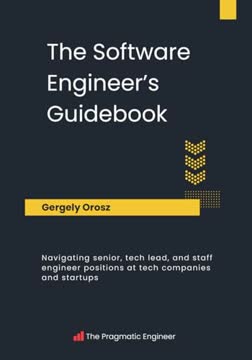
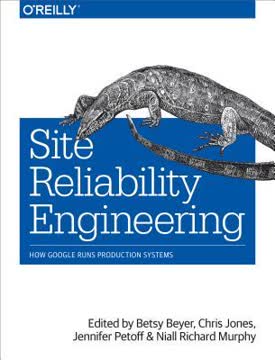
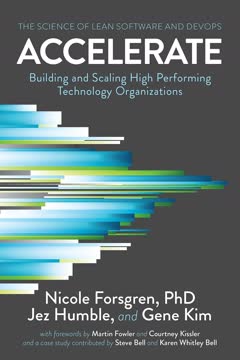
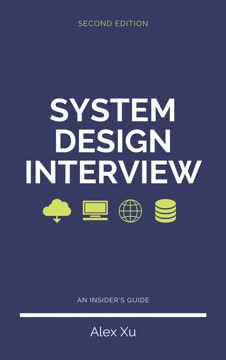



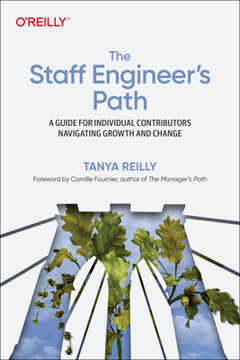
Download PDF
Download EPUB
.epub digital book format is ideal for reading ebooks on phones, tablets, and e-readers.




